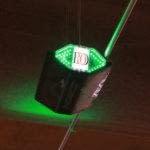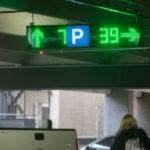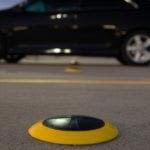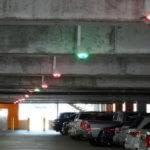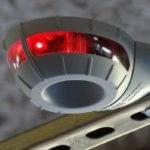License plate recognition technology has transformed how facilities manage vehicle access, parking enforcement, and security monitoring. But with numerous camera options available, selecting the right system for your specific needs can feel overwhelming.
The success of your automated parking or security system hinges on this critical decision. A poor selection can lead to missed reads, frustrated customers, and operational headaches. The right camera enhances accuracy, improves throughput, and strengthens security across your facility.
This guide outlines the essential factors that determine which license plate recognition camera will deliver optimal performance for your facility’s specific environment and goals.
Understanding License Plate Recognition Technology
License plate recognition cameras use optical character recognition (OCR) and advanced image-processing algorithms to automatically capture and decode vehicle license plates. These systems process images in real time, converting visual data into readable text that integrates with parking management, access control, or security systems.
Modern license plate recognition systems can process plates from multiple angles, varying light conditions, and different vehicle speeds. However, performance varies significantly between camera models and manufacturers.
Key Technical Specifications to Consider
Image Resolution and Clarity
Higher resolution cameras capture finer detail, improving character recognition accuracy. Look for cameras offering at least 2MP resolution, though 4MP or higher delivers superior performance in challenging conditions. The camera should maintain sharp focus across the entire license plate area, even when vehicles approach at angles.
PGS’s UPSOLUT camera features 12MP resolution with advanced autofocus, ensuring full-plate clarity across six spaces when mounted 15–25 feet high. Unlike standard options, UPSOLUT integrates 4MP+ video with LPR to maintain accuracy for reflective or angled plates.
Frame Rate and Processing Speed
Fast-moving vehicles require cameras with high frame rates to ensure consistent image clarity.. Systems operating at 30 frames per second (fps) or higher provide reliable reads in high-traffic areas.
UPSOLUT meets this benchmark and goes further—its ICOM backbone manages up to 2,500 bus components with RAID 1 redundancy, processing multiple plates per frame, and preventing slowdowns during peak volume.
Infrared and Low-Light Performance
License plate recognition frequently occurs in low-lit areas like parking garages or nighttime outdoor lots. Cameras equipped with infrared illumination(IR) and low-light sensors maintain accuracy regardless of ambient lighting conditions. Advanced models automatically adjust exposure settings based on environmental conditions.
UPSOLUT’s onboard IR and algorithms deliver >99% accuracy in low light environments. Unlike generic IR cameras, UPSOLUT uses a sealed IP67-rated housing with internal optical compensation. Eliminating distortion from glare, headlights, and shadows—ensuring consistent plate recognition.
Environmental Factors That Impact Performance
Weather Resistance
Outdoor installations demand cameras with robust weather protection. Look for IP66 or IP67 ratings, which indicate resistance to dust, rain, and extreme temperatures. Consider your local climate—cameras in coastal areas need additional corrosion protection, while those in cold climates require freeze-resistant housings.
UPSOLUT and IPsens SENSIT sensors are IP67-rated, fully dust-tight, and immersion-proof, with an operating range of -40°F to +185°F—exceeding many competitor models limited to IP54/55. POSU/COMO modules are IP65-rated for cabinet installations.
Installation Location and Angles
The camera’s mounting position significantly affects recognition accuracy. Install cameras perpendicular to traffic flow when possible, maintaining a 15-degree maximum angle for optimal results. Most systems perform optimally when mounted 8-12 feet high, positioned 15-25 feet from the recognition point.
Traditional gate-mounted LPR must stay <15° off perpendicular; UPSOLUT installs over drive aisles with 500–4500 mm ultrasonic detection distance (UMS spec). Each unit covers up to six spaces, reducing total device count and avoiding conduit runs in occupied lanes.
Traffic Flow and Volume
High-volume facilities require cameras capable of processing multiple vehicles simultaneously. Advanced LPR systems can track and recognize several plates within a single frame, improving efficiency and reducing installation costs.
Integration and Compatibility Requirements
Software Integration
Select ONVIF-compliant systems that integrate seamlessly with PARCS, gateless entry, dynamic pricing, and building management systems. PGS’s UPSOLUT platform supports app integration for ADA/EV availability, real-time rates, and car-finder features accessible via kiosk or mobile app.
Database and Storage Needs
Systems may utilize on-premises RAID 1 redundancy (ICOM Premium with dual 120GB SSDs) or cloud hosting for flexibility. Plate history searches include both plate numbers and states of issue, allowing more accurate demand and usage analysis.
Network Infrastructure
All LPR and guidance data passes through RS485/Ethernet with encrypted SSL transmission. Relay nodes operate at 902–928 MHz, while Power over Ethernet (PoE) simplifies UPSOLUT installation. Event buffering ensures zero data loss during outages.
Cost Considerations and ROI
Initial Investment vs. Long-term Value
While premium license plate recognition cameras require a higher upfront investment, they deliver greater accuracy, durability, and lower maintenance costs long term. Consider the total cost of ownership, including installation, maintenance, and potential system upgrades.
The Nebraska Furniture Mart case study shows UPSOLUT reduced installation costs by 20–30% through integrated conduit design and lowered total maintenance needs with six-space coverage per unit.
Accuracy Impact on Operations
95% accuracy = 1 in 20 plates missed. At 1,000 daily entries, that’s 50 manual interventions. UPSOLUT’s 99%+ accuracy cuts that to ~10 errors/day, dramatically lowering staff time spent on corrections.
Making Your Final Decision
Begin with a thorough site assessment to evaluate traffic patterns, environmental conditions, and integration requirements. Request vendor demonstrations and compare performance data from similar projects.
Test different camera models in your actual environment when possible. Many vendors, including PGS,offer trial periods or pilot programs that allow real-world evaluation before full deployment.
Remember, the lowest cost option rarely delivers the best value. Prioritize systems that meet your accuracy requirements, integrate well with existing infrastructure, and come backed by a manufacturer with strong support networks.
Advanced Maintenance Monitoring in PGS systems includes real-time GIS outage maps, automated work orders, and remote firmware updates. Most issues are identified via diagnostics before impacting operations.
Transform Your Facility Management Today
Choosing the right license plate recognition system isn’t just about ticking off technical boxes—it’s about understanding how factors like resolution, frame rate, or IP rating actually impact day-to-day parking operations and long-term ROI. They matter when performance and reliability are on the line.
If you’d like to explore how these technologies can improve your facility. Our team at Parking Guidance Systems is here to help. We’ll walk you through the options, provide demonstrations, answer your questions, and show you how the right system delivers not just accurate reads, but actionable data that drives results.



